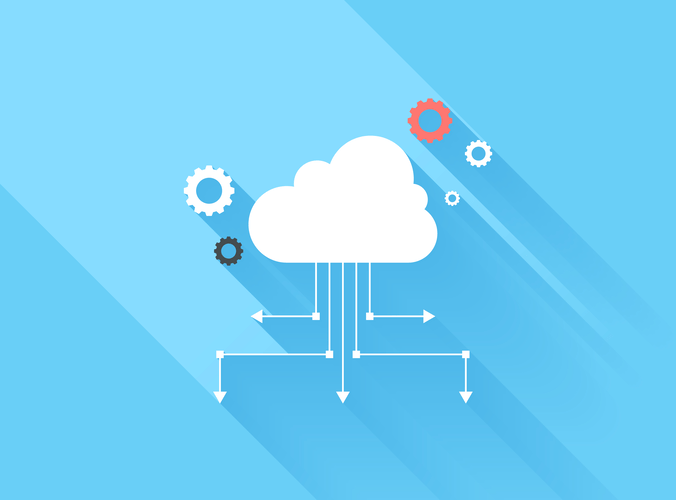Finally, we’ll review the studied ideas while comparing them in a systematic abstract. On the other hand, non-functional requirements describe how the system or product should operate, corresponding to its performance, safety, usability, reliability, etc. Non-functional necessities are often written as constraints or high quality attributes, which have a rationale, measure, and target worth. If functional requirements are not met, the system won’t meet the expectations of its customers and stakeholders. Non-functional requirements aren’t typically decomposed into extra detailed requirements. They are usually verified by inspection of the product and its documentation.
Traceability helps in understanding the influence of changes, managing risks, and guaranteeing compliance. One widespread device used for traceability is the Requirements Traceability Matrix (RTM). Performance requirements are a type of non-functional requirement that focuses on the efficiency and responsiveness of a system.
Efficiency Requirements
The methods in techniques engineering can be either software program electronic hardware or combination software-driven electronics. You can find more information in our detailed comparability of practical and non-functional necessities. You also can discover the non-functional ones along with Neo and his gang within the video beneath.
software program necessities and lays the groundwork for technical teams, traders, managers, and developers, delineating useful requirements is a big a half of writing it. User necessities play a vital function in making certain that the system or software meets the needs and expectations of its meant users.

In quick, in accordance with the famous Business Analysis Body of Knowledge (BABOK), a requirement is a illustration of a need. So, in a software improvement context, we see requirements as a set of demands that a software program product must perform. Even although the Agile philosophy is all about lowering the quantity of technical documentation and time spent writing it, some paperwork still must be carried out. And requirements should even be written down so that they’re clearly outlined and shareable.
Documenting requirements helps in decreasing ambiguity, facilitating communication, and providing a basis for validation and verification activities. Functional and non-functional necessities characterize important resources for any software program improvement staff. Functional necessities decide all the mandatory features, while non-functional necessities provide performance parameters of how such features should work within the software resolution. User necessities are a subset of functional requirements that tackle the needs and expectations of the top users. These are derived from understanding the goals, duties, and workflows of the users. Focus on the precise functionalities that customers count on from the system or software.
Data requirements be positive that the system successfully handles information, ensuring its accessibility, accuracy, and safety all through its lifecycle. Optional feature useful requirements https://www.globalcloudteam.com/glossary/functional-requirement/ apply solely when an optional feature is current as a part of the system. These requirements are recognized by the EARS methodology with the keyword WHERE.
Information To Writing Functional Necessities
Since a lack of correct requirements specification causes 68% of IT projects’ failure, we at WINaTALENT pay extra consideration to this step of our SRS and estimation document writing. If you want to learn extra about useful requirements, you presumably can take a glance at Requirements Writing for System Engineering by George Koelsch on Google Books. You need to define each system exercise for every function inside the system and address all practical requirement types. That’s why this section will probably be the longest amongst the others as many necessities could fall beneath this categorization.

It’s necessary to notice that this checklist is not exhaustive, and the precise method to gathering and structuring practical requirements might range relying on the project and its context. It’s important to notice that these examples usually are not exhaustive, and the particular non-functional necessities for a system will vary relying on the project and its context. When making an attempt to outline a sophisticated functionality, it’s simple to fall into the entice of describing it all in a single paragraph or, worse but, in a single sentence. If they comprise the word and or multiple “shalls” or other modals, they probably comprise more than one requirement. Re-write them to acquire two or more easy requirement statements, each with its personal shall.
Functional requirements could additionally be considered met even when the non-functional necessities aren’t. This can nonetheless imply that the product is unusable, such as within the consideration of performance requirements. A Functional Requirement (FR) is an outline of the service that the software program must provide.
Functional Necessities
A non-functional requirement defines the quality attribute of a software program system. Now that you have a way of what function necessities are, let’s distinguish them from non-functional requirements. Managing changes and version management is crucial to ensure that necessities are properly tracked and controlled throughout the event lifecycle. As the project progresses, requirements might evolve, new necessities might emerge, and present necessities might must be modified.
They encompass each the user necessities and different technical requirements essential for the system to perform properly. System necessities outline how the system should behave in several scenarios and description the interactions between numerous system components. In some industries and organizations, the functional specification will normally be part of a larger specification that also accommodates the non-functional necessities relevant to the system or subsystem to be designed.

These are represented or stated within the type of enter to be given to the system, the operation performed and the output expected. They are the necessities stated by the person which one can see directly in the ultimate product, not like the non-functional requirements. Understanding and distinguishing between these kind of requirements is essential https://www.globalcloudteam.com/ for the success of any project. Our complete System design course covers these concepts in detail, providing you with the data and expertise to successfully gather, document, and analyze requirements. When capturing product requirements, it is important to inform apart between practical and non-functional requirements.
Nuclino: Your Group’s Collective Mind
These methods, together with other testing techniques, help guarantee the quality and reliability of the software all through the development course of. Version control methods, such as Git, present a mechanism to trace adjustments to necessities documents and ensure that totally different variations are properly managed. By utilizing model control, you’ll find a way to simply evaluate different versions, revert to previous variations if wanted, and keep a history of adjustments. NFRs can embody various aspects, including efficiency, security, usability, reliability, maintainability, scalability, and extra. These are important for making certain the general high quality and success of a software system. Process requirements describe the specific workflows, actions, and interactions that the system ought to carry out to attain its supposed functionalities.

document (software requirements specification) indicate what a software program system must do and the method it should perform; they are product features that target user wants. Establishing traceability is an important facet of necessities management. It includes linking necessities to design and testing artifacts to guarantee that the system is constructed and examined in accordance with the desired requirements.
and backup. Successful improvement, verification, and validation of excellent practical necessities are critical to product success. In product improvement, practical requirements are typically decomposed into extra detailed necessities at progressive levels of the design process. Their success is verified and validated by way of functional testing (software testing, integration testing, etc.).
Requirements engineering ideas could additionally be utilized to kind of advanced objects. For instance, when outlining the practical necessities for a jar, a useful requirement would be that it holds a fluid and have a threaded top for a lid to seal the jam for better preservation. When a product fails useful necessities, it often means the product is of low quality and probably entirely useless.
In conclusion, understanding the distinction between functional and non-functional requirements is essential for successful project management. By utilizing this ultimate guidelines with examples, you probably can make positive that all features of your project are covered, from the core functionalities to the efficiency, safety, and usability. They present specific tips for system behavior, efficiency, safety, and different elements. Often documented utilizing techniques such as functional specs or system requirement specs.
Let’s have a look at each stage of necessities management and speak about how to optimize actions inside them. Your system’s knowledge could grow past your storage capability, so the initiatives must have the capability to archive the data for long-term storage. These capabilities concern the external interface of systems other than the principle system.
